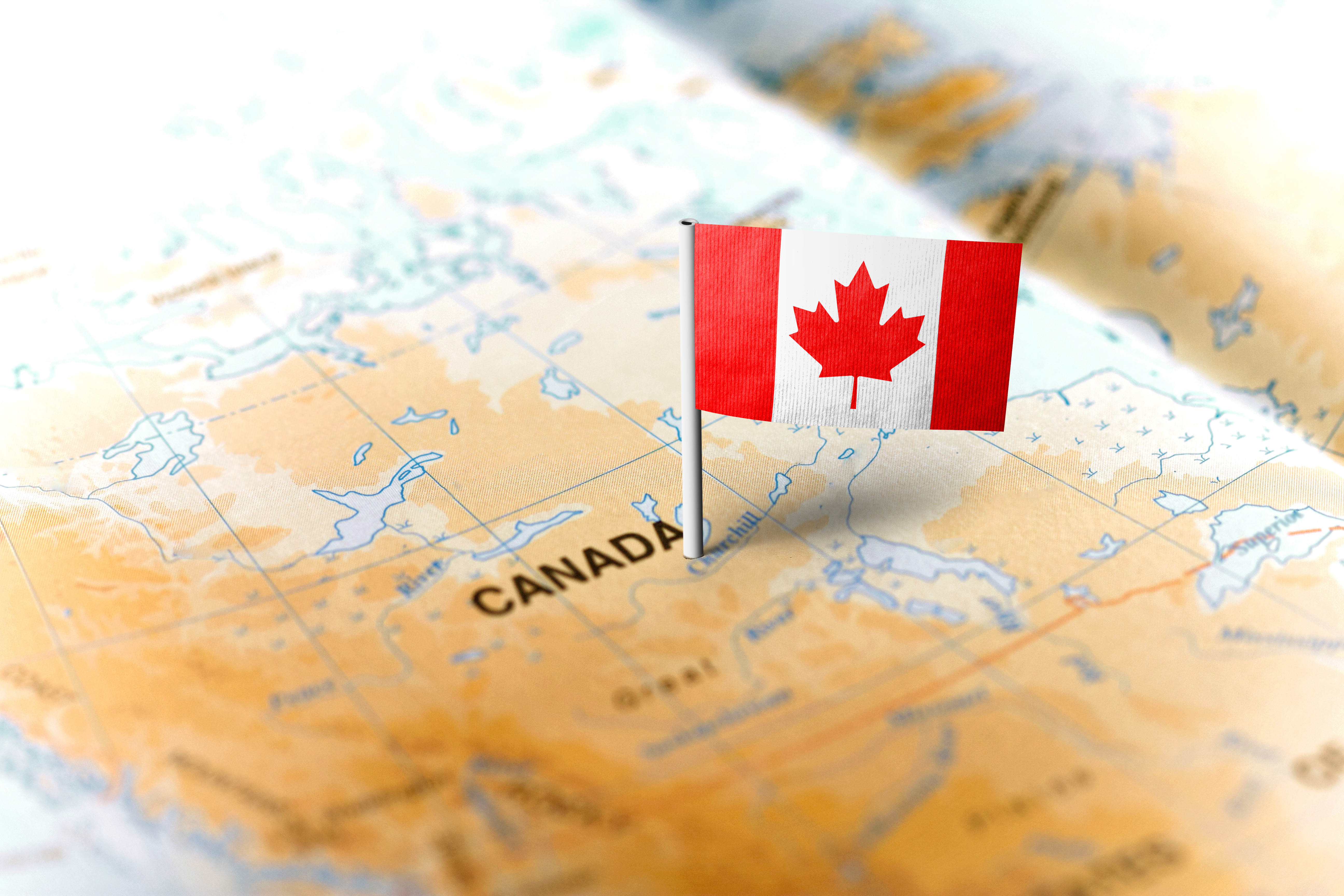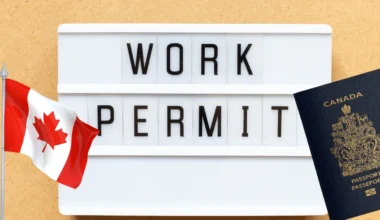Published May 11, 2025
Introduction: Why Provincial Comparison Matters for Your Immigration Journey
Provincial comparison is the most critical yet overlooked step in planning your Canadian immigration journey. This essential process impacts everything from immigration processing times to long-term happiness and success. We’ll conduct an effective provincial comparison across crucial factors, including immigration pathways, cost of living, job opportunities, healthcare quality, education options, and potential for cultural integration.
Canada’s 10 provinces and three territories each offer distinct advantages and challenges for newcomers. What works perfectly for a tech professional from India might be entirely wrong for a healthcare worker from Brazil or a tradesperson from Nigeria. As Aminah from Pakistan discovered: “I originally planned to settle in Toronto because that’s where most of my friends went, but after doing a thorough provincial comparison based on my nursing qualifications, I found Manitoba offered faster licensing, lower living costs, and a PNP program specifically for healthcare workers. This provincial comparison research literally saved me years of frustration!”
Let’s dive into what makes each province unique and how to determine which one aligns with your specific situation, career goals, and lifestyle preferences.
Immigration Pathways: Provincial Program Comparison
Each province operates a unique Provincial Nominee Program (PNP) targeting different skills, experience levels, and backgrounds. Understanding these differences through careful provincial comparison is crucial for your immigration strategy.
Express Entry-Aligned Provincial Programs
Most provinces offer streams that align with the federal Express Entry system, providing a 600-point CRS boost to nominated candidates:
| Province | Key Express Entry-Aligned Streams | Notable Features | Nomination Criteria |
|---|---|---|---|
| Ontario | Human Capital Priorities Stream | Targets specific NOC codes and CRS ranges | Minimum CRS 450+ is typically required |
| French-Speaking Skilled Worker Stream | No job offer required for French speakers | CLB 7+ in French, CLB 6+ in English | |
| British Columbia | Skilled Worker Category | Tech occupations are often prioritized | A job offer typically required |
| International Graduate Category | BCPNP Tech fast track available | BC education or skilled job offer needed | |
| Alberta | Alberta Express Entry Stream | Prioritizes ties to Alberta | Lower CRS scores are often considered (300+) |
| Saskatchewan | Express Entry Category | Targeted occupation list | EOI points-based selection |
| Manitoba | Skilled Worker Overseas Stream | Connection to Manitoba is usually required | Uses unique points assessment |
| Nova Scotia | Nova Scotia Demand Stream | In-demand occupation focus | A job offer may not be required |
| Nova Scotia Experience Stream | Prior Nova Scotia work experience | Minimum 6 months of NS experience | |
| New Brunswick | Express Entry Stream | Focus on in-demand sectors | Invitation-based, targeted occupations |
| PEI | Express Entry Stream | Small but targeted nominations | EOI system with quarterly draws |
| Newfoundland | Express Entry Skilled Worker | Recent focus on healthcare and tech | A job offer typically required |
| International Graduate Category | Retains international students | NL education and job offer required |
“The provincial comparison showed me that despite my modest CRS score of 380, I could qualify for Alberta’s Express Entry stream given my experience in veterinary medicine and the province’s need in that field,” shares Omar. “Without this provincial comparison research, I might have spent years trying to increase my federal Express Entry score, when a provincial pathway was available to me right away.”
Sources you can explore for the most current provincial program details include the official IRCC Provincial Nominee Program overview and each province’s immigration website.
Province-Specific Immigration Programs
Beyond Express Entry-aligned streams, each province offers unique nomination pathways worth examining in your provincial comparison:
British Columbia’s Entrepreneur Immigration: The BC Entrepreneur stream requires $600,000+ net worth and $200,000+ investment in a new business, making it accessible to entrepreneurs with moderate capital compared to federal programs.
Manitoba’s Community-Driven Immigration: Manitoba prioritizes community connections through unique pathways, such as the Manitoba Community Support Stream, which allows local communities to endorse candidates who demonstrate genuine integration potential.
Atlantic Immigration Program: Nova Scotia, New Brunswick, Prince Edward Island, and Newfoundland participate in this employer-driven program offering simplified pathways for skilled workers, international graduates, and intermediate-skilled workers with job offers.
Rural and Northern Immigration Pilot: Communities in Ontario, Manitoba, Saskatchewan, Alberta, and British Columbia participate in this program, allowing employers in specified rural communities to recruit international talent with lower barriers than traditional programs.
Quebec’s Distinct Immigration System: As the only province with complete control over economic immigration selection, Quebec operates programs such as the Quebec Regular Skilled Worker Program and the Quebec Experience Program, both with a French-language focus.
Ontario’s International Student Pathways: The Ontario Immigrant Nominee Program offers targeted streams for international master’s and PhD graduates from Ontario institutions, with no work experience or job offer required.
Always check the most recent provincial immigration updates as programs frequently change to address evolving labor market needs.
Economic Comparison: Jobs, Industries, and Wages Across Provinces
A thorough provincial comparison must include labor markets, which vary dramatically in terms of dominant industries, unemployment rates, and wage levels. Here’s how they compare:
Key Economic Indicators by Province
| Province | Major Industries | Unemployment Rate | Average Wage | Professional Recognition |
|---|---|---|---|---|
| Ontario | Finance, Tech, Manufacturing, Healthcare | 5.7% | $68,500 | Often, complex processes for regulated professions |
| British Columbia | Tech, Film, Tourism, Natural Resources | 4.9% | $65,800 | Generally efficient for tech/digital professions |
| Alberta | Energy, Agriculture, Healthcare | 6.5% | $73,200 | Streamlined for many technical professions |
| Quebec | Aerospace, Pharmaceuticals, Manufacturing | 5.2% | $62,400 | Most processes require French proficiency |
| Saskatchewan | Agriculture, Mining, Healthcare | 5.0% | $64,700 | Efficient for trades and healthcare |
| Manitoba | Manufacturing, Agriculture, Healthcare | 5.3% | $58,900 | Streamlined healthcare recognition |
| Nova Scotia | Healthcare, Education, Tourism | 6.9% | $55,600 | Improving recognition pathways |
| New Brunswick | Forestry, Tourism, Healthcare | 7.2% | $54,300 | Expedited for priority sectors |
| PEI | Agriculture, Tourism, Manufacturing | 8.1% | $52,700 | Limited but improving |
| Newfoundland | Energy, Fishing, Healthcare | 10.3% | $61,200 | Focus on the healthcare and energy sectors |
Data compiled from Statistics Canada and provincial labor market reports as of April 2025
Occupation-Specific Provincial Opportunities
Different provinces offer varying prospects for specific career paths, which is why occupational provincial comparison is essential:
Information Technology Professionals: British Columbia and Ontario lead in tech employment, with Vancouver and Toronto housing major tech hubs. However, emerging tech scenes in Halifax (Nova Scotia), Waterloo (Ontario), and Calgary (Alberta) offer lower competition and cost of living.
For tech credentials, Ontario and BC typically have the most streamlined recognition processes, while Quebec offers specialized tech immigration programs but requires French-language proficiency.
Healthcare Professionals: All provinces face healthcare worker shortages, but recognition pathways vary significantly. Nova Scotia and Manitoba have created expedited licensing for international nurses, while British Columbia has streamlined pathways for physicians in rural communities.
Ontario offers the most diverse healthcare opportunities but often has the longest licensing processes, particularly for physicians. The National Nursing Assessment Service provides province-specific guidance for internationally trained nurses.
Skilled Trades: Alberta, Saskatchewan, and Newfoundland currently show the highest demand for skilled trades, with expedited certification processes and higher wages in many cases. The Red Seal Program offers standardized certification recognized across provinces for many trades.
Finance and Business Professionals: Ontario dominates in finance and business opportunities, particularly in Toronto, but also features the highest levels of competition. Calgary (Alberta) offers significant opportunities in corporate headquarters with generally lower competition than Toronto.
“When I conducted my provincial comparison as a mechanical engineer, I discovered Alberta offered both higher wages and faster engineering licensure than Ontario,” explains Rahul from India. “This provincial comparison data guided me to Calgary rather than Toronto, where I secured a position within three months of arrival and completed my professional licensing in just over a year.”
Cost of Living Comparison Across Canadian Provinces
Your effective quality of life depends not just on income potential but on living costs, which vary dramatically across Canada—making cost of living a critical element in any provincial comparison:
Housing Affordability by Province
Housing represents the most significant expense for most newcomers, with provincial variations that can affect your financial stability:
British Columbia: The least affordable housing in Canada, with Vancouver’s average home price exceeding $1.2 million and average one-bedroom rental at $2,400/month. Even smaller BC cities like Victoria and Kelowna have seen dramatic price increases.
Ontario: Toronto rivals Vancouver’s housing costs, with average home prices around $1.1 million and one-bedroom rentals averaging $2,200/month. However, smaller Ontario cities like London, Windsor, and Thunder Bay offer significantly more affordable options.
Quebec: Montreal offers remarkably affordable housing for a major city, with one-bedroom rentals averaging $1,500/month and home prices substantially lower than in Toronto or Vancouver. Quebec City is even more affordable.
Alberta, Saskatchewan, and Manitoba: These prairie provinces offer some of Canada’s most affordable housing in proportion to incomes. Calgary and Edmonton feature modern urban amenities with one-bedroom rentals averaging $1,300-$1,400/month.
Atlantic Provinces: Housing costs in Nova Scotia, New Brunswick, PEI, and Newfoundland are generally affordable, though Halifax (NS) has seen significant recent increases. These provinces offer some of the best housing affordability metrics in Canada.
Detailed, current housing costs can be researched through the Canada Mortgage and Housing Corporation market reports.
Total Cost of Living Comparison
Beyond housing, other expenses vary significantly between provinces, making a comprehensive provincial comparison necessary:
Transportation: Public transit infrastructure varies dramatically, from Toronto’s extensive network to limited options in smaller cities. Vehicle insurance costs range from Quebec’s affordable public system (averaging $700/year) to British Columbia’s expensive private insurance (averaging $1,900/year).
Childcare: Quebec leads with subsidized childcare at approximately $8-$20/day, while Ontario and BC parents might pay $50-$80/day for infant care. Recent federal agreements are gradually reducing these costs nationwide, but provincial variations remain substantial.
Healthcare Supplementation: While basic healthcare is universal, provincial health plans cover different services and have varying wait times for specialists. Quebec and Ontario typically offer the most comprehensive coverage, while some Atlantic provinces have longer wait times for specialized care.
Taxation: Provincial income tax rates vary significantly, with Quebec imposing the highest rates but offering more services, while Alberta maintains lower rates but fewer provincial services.
Groceries and Essentials: Northern territories and remote communities face significantly higher costs for basic goods, while urban centers in Ontario and Quebec generally offer competitive pricing and diverse options.
The Living Wage Network provides helpful comparisons of the income needed for basic needs across different Canadian communities.
Climate and Geography: Environmental Factors in Provincial Selection
Canada’s vast geography creates dramatically different living environments that impact lifestyle, commuting, recreation, and even health—an often overlooked aspect of provincial comparison:
British Columbia: Offers Canada’s mildest climate along the southern coast, with rainy but rarely freezing winters in Vancouver and Victoria. The interior experiences hotter summers and colder winters. Mountains, oceans, and temperate rainforests create diverse recreational opportunities.
Prairie Provinces (Alberta, Saskatchewan, Manitoba): Experience extreme seasonal variations with frigid winters (-30°C not uncommon) and warm summers. Winnipeg is famously known as both the coldest major city in winter and among the hottest in summer. Clear skies and sunshine are abundant year-round.
Ontario: Southern Ontario has relatively moderate winters by Canadian standards, while northern regions experience severe cold. Humidity makes summer feel hotter than in western provinces. The Great Lakes influence weather patterns and provide recreational opportunities.
Quebec: Experiences cold, snowy winters (particularly in Quebec City and northern regions) and warm, humid summers. The province embraces winter with festivals and outdoor activities rather than trying to escape it.
Atlantic Provinces: Coastal areas have moderated temperatures but significant precipitation and fog. Inland areas experience colder winters. The ocean influences everything from activities to industry to local culture.
Northern Territories: Extreme winters with limited daylight, followed by brief summers with very long days. These regions require significant adaptation for those from warmer climates.
“Coming from sunny Brazil, I worried about Canadian winters,” says Isabella, now settled in Halifax. “When doing my provincial comparison, I discovered Atlantic Canada had milder winters than places like Manitoba or Quebec. This provincial comparison helped me choose Nova Scotia, where the coastal climate is more moderate, and I’ve adapted much better than friends who went to Montreal or Winnipeg.”
The climate factor in provincial comparison often gets overlooked, but it can significantly impact your long-term satisfaction, especially if you’re coming from a completely different climate.
Social Factors: Language, Diversity, and Integration
Social considerations vary substantially between provinces and can determine how quickly you’ll integrate and feel at home—a critical dimension in provincial comparison:
Language Requirements and Environment
Quebec: French is the official language, with strict language laws promoting its use. While Montreal has significant English usage, most of the province functions primarily in French. Provincial immigration programs require French proficiency, and many professional licensing processes do as well.
New Brunswick: Canada’s only officially bilingual province, with both English and French communities. Certain areas are predominantly French-speaking, while others operate primarily in English.
Ontario, British Columbia, and Other Provinces: Primarily English-speaking in public life, though many urban centers have vibrant multilingual communities. Services are generally available in English with some French options.
The Office of the Commissioner of Official Languages provides detailed information about language rights and services across Canada.
Cultural Diversity and Immigrant Communities
Established immigrant communities can ease transition and provide crucial social support—another element to evaluate in your provincial comparison:
Greater Toronto Area (Ontario): Home to the most diverse population in Canada, with established communities from virtually every country and region. Over 50% of residents are foreign-born, creating infrastructure specifically designed to support newcomers.
Vancouver (British Columbia): Features large East Asian and South Asian communities, with services and businesses catering to these populations. Many neighborhoods feature specific cultural concentrations.
Montreal (Quebec): Hosts diverse Francophone immigration from North and West Africa, Haiti, and France, alongside established English-speaking communities.
Prairie Urban Centers: Winnipeg features one of Canada’s largest Filipino communities, while Calgary and Edmonton have rapidly growing South Asian and African populations.
Smaller Communities: Immigrant representation varies significantly, with some smaller cities developing specific ethnic concentrations through targeted immigration programs—research these communities through municipal websites and settlement agencies.
Making Your Decision: How to Apply This Provincial Comparison
Now that you understand how provinces differ, here’s a framework for making your decision:
Step 1: Prioritize Your Selection Factors
Everyone’s situation is unique. Rank these factors based on your specific circumstances for effective provincial comparison:
- Immigration pathway accessibility
- Employment opportunities in your field
- Professional credential recognition
- Cost of living considerations
- Climate preferences
- Language environment
- Cultural communities and support
- Education needs (if applicable)
- Healthcare priorities
Step 2: Eliminate Non-Viable Options
Based on your must-have criteria, eliminate provinces that don’t meet your essential requirements. For example:
- If you don’t speak French, Quebec’s economic immigration may be challenging
- If you require a specific immigrant community for support, check if it exists in your target province
- If your profession has provincial licensing, verify recognition pathways
- If you cannot tolerate extreme winters, consider climate limitations
Step 3: Compare Short-Listed Provinces
For your remaining options, conduct deeper provincial comparison research through:
- Provincial immigration websites for current program details
- Professional regulatory bodies for credential recognition processes
- Settlement agencies serving your target communities
- Online forums and social media groups of immigrants in those locations
- Virtual connection with immigrants from your country in target provinces
Conclusion: Your Informed Provincial Choice
Provincial comparison isn’t just about immigration pathways—it’s about finding where you’ll truly thrive in Canada. As we’ve seen, each province offers distinct advantages and challenges that will impact your immigration journey, economic opportunities, and quality of life.
Remember that your first Canadian destination doesn’t have to be permanent. Many successful immigrants start in provinces with accessible immigration programs, then relocate once they’ve obtained permanent residence. Others discover unexpected opportunities in their initial province and put down roots where they never expected to stay.
What matters most is making an informed decision based on a comprehensive provincial comparison, rather than following others’ paths or relying on limited information. Your unique skills, background, and priorities should drive your provincial selection.
At Dalitzo Services, we’ve guided thousands of newcomers to their ideal Canadian province, and we’ve seen how the right provincial match accelerates immigration, eases transition, and supports long-term success. Your Canadian journey deserves the same careful consideration.





